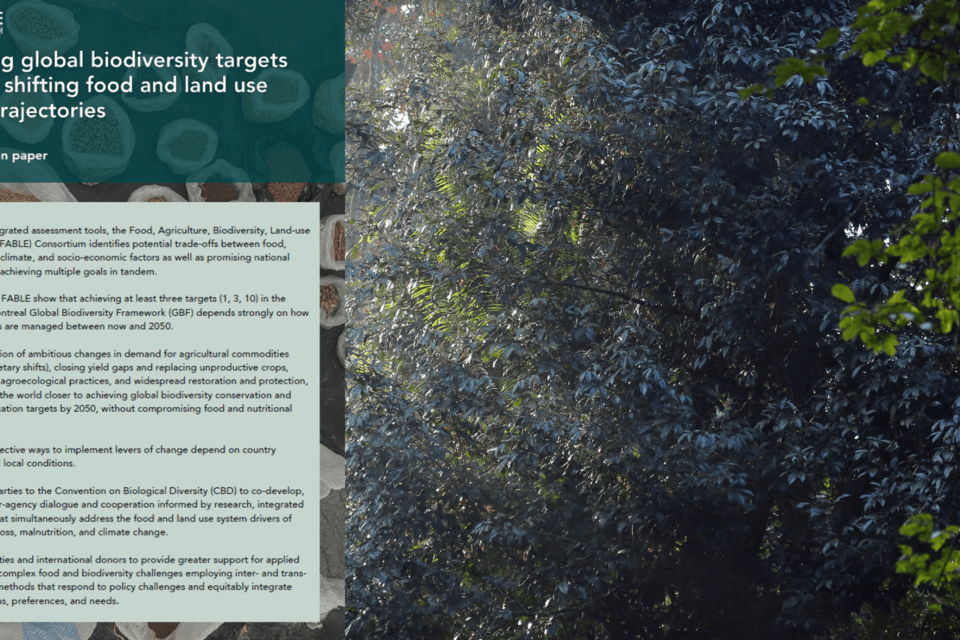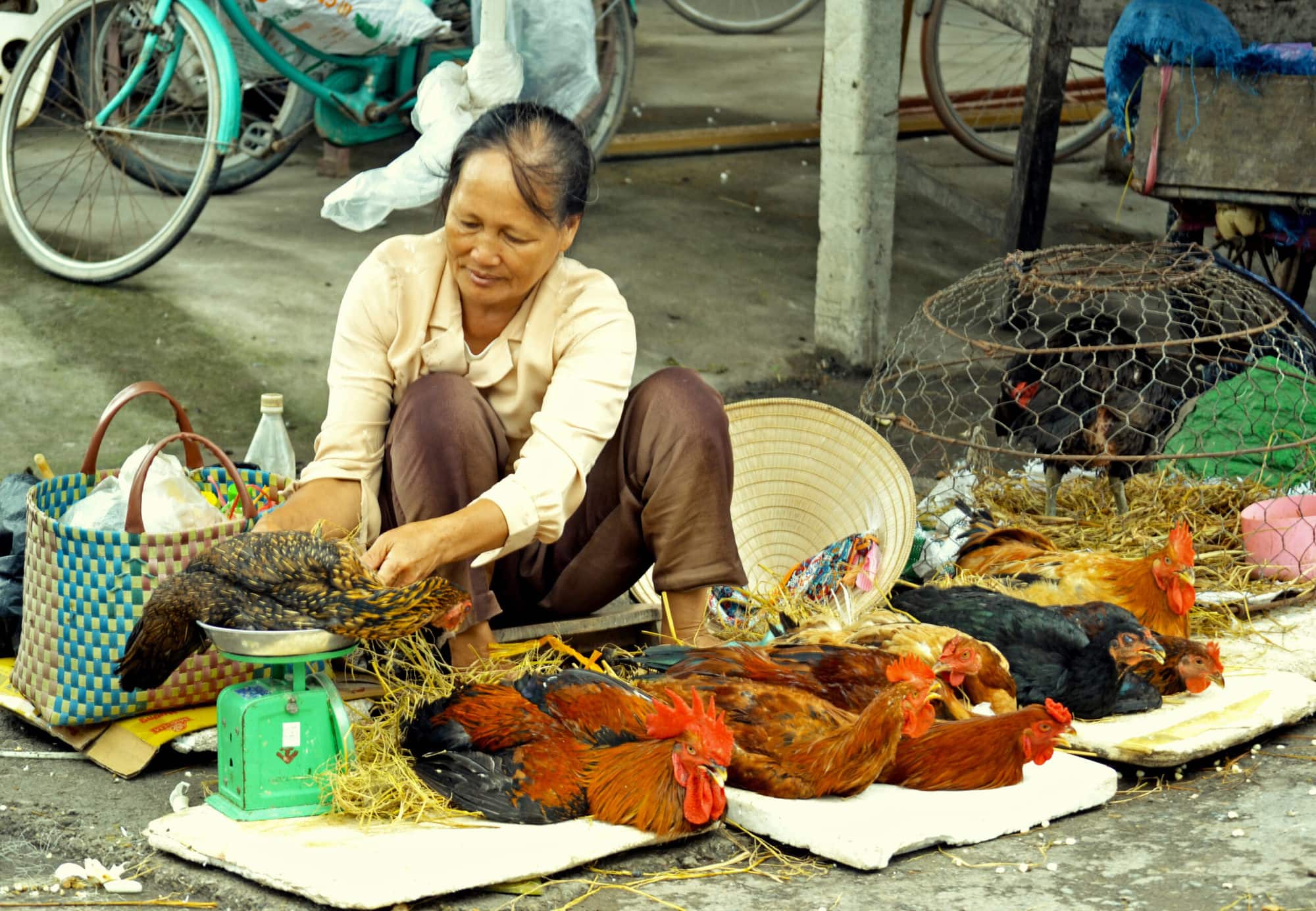Achieving global biodiversity targets requires shifting food and land use system trajectories
- From
-
Published on
22.10.24
- Impact Area

The Food, Agriculture, Biodiversity, Land-use and Energy (FABLE) consortium brings countries together to identify pathways for achieving national and global biodiversity, food, climate and development goals in tandem. Results from FABLE show that achieving at least three targets (1, 3, 10) in the Kunming-Montreal Global Biodiversity Framework (GBF) depends on how food systems are managed between now and 2050.
Our position paper, launched this week to coincide with COP16, highlights those ambitious changes in diets, closing yield gaps and replacing unproductive crops, accelerated adoption of agroecological practices, and widespread restoration and protection, would bring the world closer to achieving global biodiversity conservation and climate mitigation targets by 2050, without compromising food and nutritional security.
Related news
-

Australia partners with International Livestock Research Institute to upskill researchers from Africa and Asia
International Livestock Research Institute (ILRI)13.11.25-
Food security
-
Poverty reduction, livelihoods & jobs
Australia has joined forces with the International Livestock Research Institute (ILRI) to support th…
Read more -
-

A decade of academic and research partnership advances One Health in Vietnam
International Livestock Research Institute (ILRI)13.11.25-
Health
In northern Vietnam, Thai Nguyen province has become one of the most active hubs for…
Read more -
-

Accelerating wheat breeding, from Toluca in Mexico to the world
CGIAR Initiative on Breeding Resources12.11.25-
Climate adaptation & mitigation
-
Nutrition, health & food security
In Mexico, a project has been completed to develop new elite parental lines of wheat…
Read more -
